How to Completely DELETE Your Facebook Account in 2024
Deleting your Facebook account shouldn’t be a challenge. Unfortunately, as the company is reluctant to let its users leave, the process is very long-winded and complicated. Whether you want to take a break from Facebook or completely delete your account, this step-by-step guide will help you do it easily within just a few minutes.
How to Permanently Delete Your Facebook Account
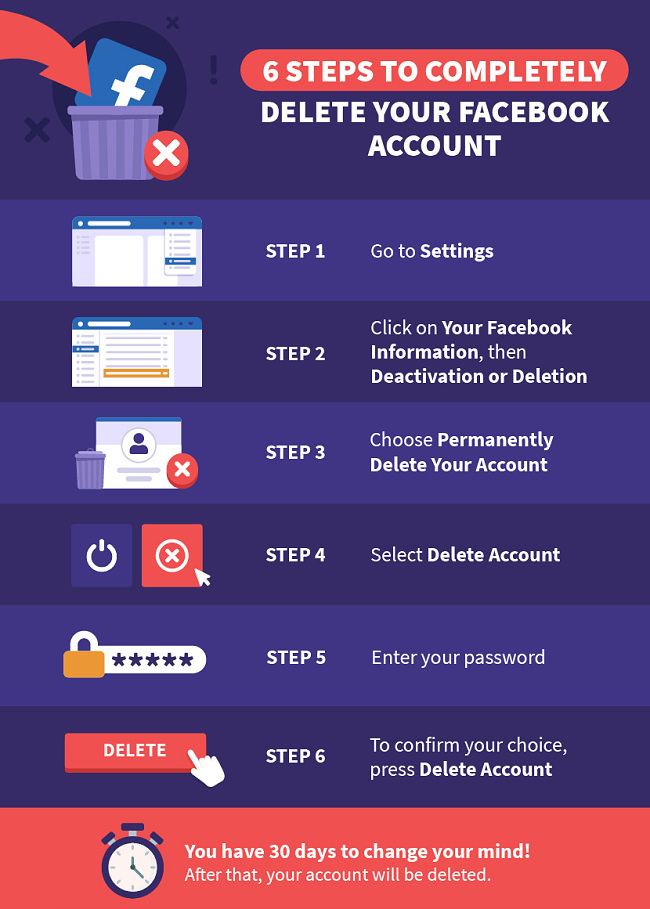
Important! Facebook offers a 30-day grace period for every user wanting to delete their account. Within this period, you can log in to your profile or any third-party app linked to your Facebook account (like Candy Crush or Spotify) and reverse the deletion process.
There are many precautionary steps you can take before you decide to permanently delete your Facebook account, like restricting who can view your profile or regularly removing cookies collected by the platform. They won’t fully secure your data, but if you’re not ready to quit Facebook yet, these extra safety measures will ensure only the most essential information is stored on the servers.
6 Steps to Delete Your Facebook Account on Desktop
- Go to “Settings” by clicking the tab in the drop-down menu in the top right corner.
![Screenshot of how to access Settings on Facebook]()
- Click on “Your Facebook Information.” From there, go into “Deactivation or deletion.”
![Screenshot of "Your Facebook information" tab highlighting "Deactivation and deletion" option]()
- Choose “Permanently delete your account” and press “Continue.”
![Screenshot of "Permanently delete account" option]()
- The app will prompt you to save any of your data, including photos and posts, and edit any groups you are the admin for. You can either save your data and then delete or simply select “Delete Account.”
![Screenshot of deleting Facebook account]()
- Enter your password and click “Continue.”
![Screenshot of entering password to confirm account deletion]()
- You’ll see a pop-up warning informing you about Facebook’s 30-day deactivation period. This gives you a chance to log back in and cancel the process if you change your mind. To proceed, press “Delete Account.”
Now your account is scheduled for deletion after the 30-day grace period!![Screenshot of confirming account deletion]()
![Screenshot of Facebook account being scheduled for deletion]()
How to Delete Your Facebook Account on Your Phone
- Click on the three horizontal lines in the bottom right corner of your screen. Select “Settings” from “Settings & Privacy.”
![Screenshot of where to find Settings in Facebook's mobile app]()
- Scroll down to “Your Facebook information” and click “Account Ownership and Control.”
![Screenshot of where to find "Account ownership and control" settings]()
- Press “Deactivation and deletion.”
![Screenshot of how to access account deletion on the mobile app]()
- Select “Delete account” and click “Continue to account deletion.”
![Screenshot of how to continue to account deletion on the mobile app]()
- Before you proceed any further, Facebook will give you an option to deactivate your account instead, download your files, and manage pages you admin for. To confirm your choice, press “Delete Account.”
![Screenshof of how to proceed with Facebook account deletion through a mobile app]()
- Enter your password and click “Continue.”
![Screenshot of entering password to confirm deletion]()
- Finally, to complete the process, press “Delete Account.”
![Screenshot of confirming account deletion on a phone]()
Your account is now scheduled for deletion.
Why You Should Download an Archive Before You Push Delete
Deleting your Facebook account permanently removes all of your data from the system. As the platform is used to share and store precious memories, you should save your data (like pictures and videos) before deleting your Facebook account. To do so, follow my guide and save archived files on your device.
Easy Guide to Download an Archive of Your Facebook Account
- Select “Settings” from the drop-down menu.
![Screenshot of how to access Settings on Facebook]()
- Click on “Your Facebook Information” and go to “Download your information.” Alternatively, select “Transfer a copy of photos or videos” to move your media files to Google Photos.
![Screenshot of "Your Facebook information" tab highlighting how to download your information]()
- In the “Request a copy” tab, select which information you’d like to keep. You can tick just one box or all of them, depending on which data you want to save. Next, click “Create File.”
![Screenshot of selecting files to download from Facebook]()
- Facebook will begin to create a copy of the selected files for you. You can check the progress of your archived files in the “Available copies” tab. You’ll receive a notification once the file is ready to download.
![Screenshot of available copies of files to download]()
- When the copy is created, you can access it in the “Available copies” tab and download it to your device.
![Screenshot of Facebook files ready to be downloaded]()
Changed Your Mind? Here’s How to Get Your Account Back
Facebook offers a 30-day grace period for every person who decides to delete their account. Should you change your mind at any point, you can reactivate your account. Logging back in using your details will instantly restore all your data allowing you to use Facebook without a change.
However, if you change your mind after the grace period, you won’t be able to reverse the process. If you aren’t sure you want to delete your Facebook account, you should consider deactivating it first.
Deleting vs. Deactivating: What’s the Difference?
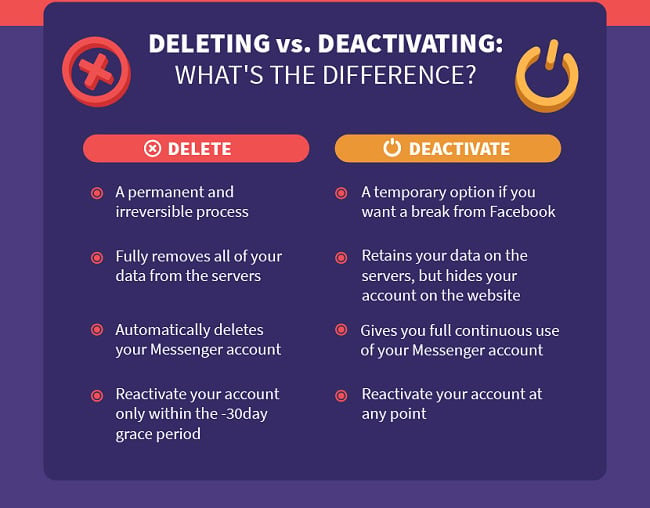
There is a major difference between deactivating and deleting your Facebook account. If you decide to delete your profile, it is a permanent and irreversible action. You won’t be able to use the Facebook login option for any third-party apps, like Spotify or Tinder. Removing your account from the platform also automatically deletes you from Messenger. All of your old texts and conversations will be cleared and removed with no recovery option.
On the other hand, deactivating your account will temporarily make your account invisible to others. Every detail on your profile and timeline, alongside your likes, photos, and posts, will be hidden until you decide to reactivate it. There is no time limit in place, so you can go back to your Facebook account even a year later. Deactivating also allows you to continue using Messenger without a change. Your old messages will still be visible, alongside your name and profile picture.
Simply follow the steps below to temporarily remove yourself from the site.
How to Deactivate Your Facebook Account
- Go to “Settings.”
![Screenshot of how to access Settings on Facebook]()
- Click on the “Your Facebook information” tab and select “Deactivation and deletion.”
![Screenshot of "Your Facebook information" tab highlighting "Deactivation and deletion" option]()
- Choose “Deactivate account” and press “Continue to Account Deactivation.”
![Screenshot of how to deactivate Facebook account]()
- Enter your password and click “Continue.”
![Screenshot of entering Facebook password]()
- Facebook requires its users to select a reason for deactivation. As it’s a required field, to proceed any further, click on one or more reasons. Once you’ve selected a reason, press “Deactivate.”
![Screenshot of list of reasons for account deactivation]()
- In the pop-up window, click “Deactivate Now.”
![Screenshot of deactivating Facebook account]()
- Your account is now deactivated. To reactivate your account simply log back in using your old login details.
![Screenshot of the confirmation of account deactivation]()
Protect Yourself From Third-Party Apps With “Off-Facebook”
Due to Facebook’s vague third-party policies, you may be giving away more detailed information than you think. Using your Facebook details to log in to third-party apps automatically allows both platforms to exchange your collected data.
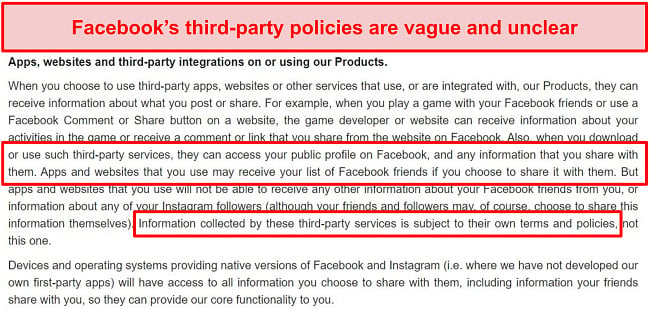
In January 2020, Facebook released Off-Facebook, a security feature that allows users to decide which data from third-party apps can be stored and used by the platform. For added data security, all you have to do is regularly clear your third-party activity.
This feature can only be used on the Facebook mobile app, so follow these steps from your iOS or Android device.
How to Clear Your Off-Facebook Activity
- Click on the menu in the top right corner. Open your Settings under “Settings & Privacy.”
![Screenshot of where to find Settings in Facebook app]()
- Choose “Off-Facebook activity” from the list.
![Screenshot of where to find off-Facebook activity settings]()
- To view all of your off-Facebook activity, select “Manage your off-Facebook activity.”
![Screenshot of how to manage your off-Facebook activity]()
- Enter your password. Then you can select each item from the list and remove those you don’t want.
![Screenshot of how to remove your data from individual app using the off-Facebook feature]()
- Alternatively, to clear all of your activity, press “Clear history.” This will automatically delete every activity on the list.
![Screenshot of how to clear all off-Facebook activity history]()
Take Control of Your Security on Facebook by Changing Your Settings
Deleting your Facebook account isn’t the only option for protecting your data. If you’re not ready to quit the platform yet, but want to feel safer while using it, adjust your security settings.
How to Change Your Security Settings on Facebook
- From the drop-down menu in the top right corner, select “Settings.”
![Screenshot of how to access Settings on Facebook]()
- Go to the “Privacy” tab.
![Screenshot of privacy settings]()
- To change who can see your posts, select “Edit” under “Your Activity.” You can choose to make your posts visible to everyone, just your friends, or keep them fully private.
![Screenshot of selecting who can see your future posts on Facebook]()
- To review and edit what posts you’re tagged in, click on “Use Activity Log.” This will take you to a list of posts you’re tagged in. There, individually select which posts you want to add to your timeline and which ones you’d like to hide.
![Screenshot of reviewing posts you're tagged in]()
- You can limit who can see your old posts on your timeline by clicking on “Limit Past Posts.” This will automatically hide all your previous posts, making them visible only to your friends.
![Screenshot of limiting past posts on Facebook]()
- Finally, select how you want to be contacted by others. You can do so by selecting each option and choosing a desired category from the drop-down menu.
![Screenshot o limiting how people can contact you on Facebook]()
Feel Safer by Deleting Content on Facebook
By accessing your activity log and deleting any unnecessary data, you can increase your online safety without deactivating or deleting your account.
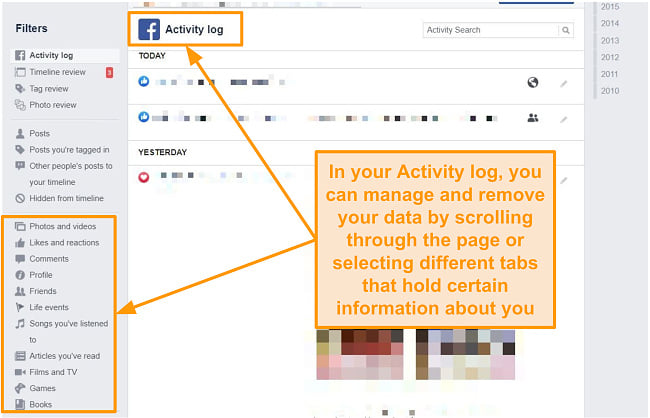
Unfortunately, there is no quick way to clear your entire activity log. You will have to select each item, post, and photo individually.
To increase your safety on Facebook, do the following:
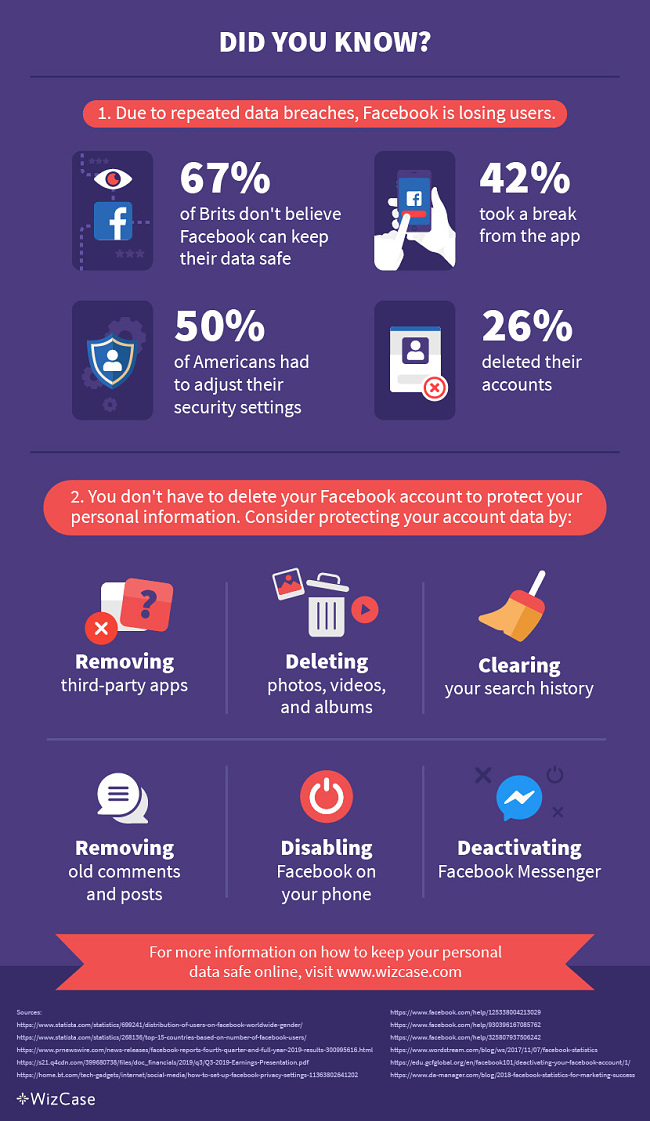
1. Remove third-party apps from your profile to protect your data
To make sure your data isn’t mishandled by platforms linked to your Facebook profile, regularly review and remove third-party apps that you don’t trust by following these steps:
- In Settings, find the “Apps and websites” tab.
![Screenshot of apps and websites settings on Facebook]()
- This will give you access to the list of all third-party apps linked to your Facebook profile. Click “Remove” next to each app you’d like to remove.
![Screenshot of removing active apps on Facebook]()
- Expired apps can’t access your personal information anymore, but can still store your personal data. It’s best to remove them from your account. Simply tick each app and select “Remove.”
![Screenshot of removing expired apps on Facebook]()
2. Delete your photos, videos, and albums so strangers can’t access them
- Go into your Activity Log. It can be found in Settings, under “Your Facebook information.”
![Screenshot of Activity log settings]()
- Choose “Photos and videos” from the list on the left-hand side.
![Screenshot of where to find old photos and videos on Facebook]()
- The list of all of your photos and videos added to Facebook will appear in chronological order. To erase them, select the pencil icon next to each log and choose “Delete.” You’ll have to delete each post individually.
![Screenshot of how to delete each photo and video on Facebook]()
You can delete whole albums instead of individual photos by going into the “Albums” tab in your account. Click on the three dots in the bottom right corner of each album and select “Delete.”
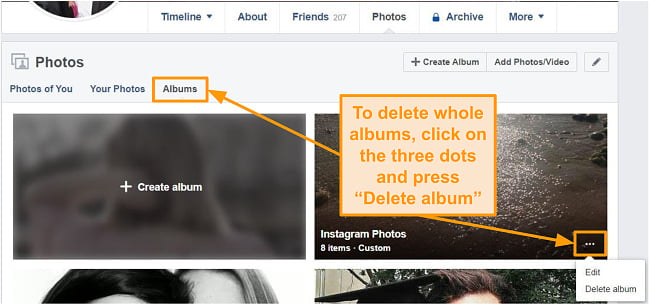
3. Clear your Facebook search history so your activities can’t be tracked
- Click on the search bar at the top. Next to your recent searches click the “Edit” button.
![Screenshot of how to access Facebook search history settings]()
- If you want to remove each search term individually, click on each crossed icon and then select “Delete.”
![Screenshot of how to delete each Facebook search term]()
- Alternatively, to remove all of your search history, press “Clear Searches” at the top of the screen.
![Screenshot of how to clear whole Facebook search history]()
4. Remove your comments and posts
- Access your Activity Log through “Your Facebook information.”
![Screenshot of Activity log settings]()
- Select “Comments” from the list on the left-hand side.
![Screenshot of where to find old Facebook comments]()
- Click on the pencil icon in the right corner of each comment. Then select “Delete.”
![Screenshot of how to delete comments on Facebook]()
- To delete your old posts, navigate to “Posts” in your Activity Log and follow the same steps.
![Screenshot of how to delete old Facebook posts]()
5. Disable the Facebook app on your phone
Important! Most phones come with Facebook pre-installed on their systems. This means that it’s impossible to fully delete the app — you’ll only be able to disable it.
Disabling the Facebook app on your mobile devices will prevent you from accidentally logging in after deleting or deactivating your account. If you change your mind, you can enable the app at any point through your Application Settings.
The steps will differ depending on whether you use an Android or iOS device. You can find both sets of instructions below.
Disable the Facebook App on Android in 3 Steps
- Go into Settings on your phone and select “Apps.”
![Screenshot of Facebook settings]()
- Find Facebook on the list of all installed applications and click on it.
![Screenshot of how to find the Facebook app on your phone]()
- To disable the app, choose the “Disable” button. It can be found either at the top of the screen, at the bottom, or underneath the Facebook logo.
![Screenshot of disabling the Facebook mobile app]()
How to Disable Facebook on iOS
- Press and hold the Facebook app icon.
- Click “Delete” from the drop-down menu.
![Screenshot of how to delete the Facebook app on iOS]()
- Select “Delete” to confirm.
![Screenshot of deleting the Facebook app on iOS]()
6. Deactivate Facebook Messenger
Using Messenger can still compromise the security of your data as it’s stored on Facebook servers. To avoid this, deactivate Messenger by following the instructions below:
- Select your Messenger profile in the top left corner of the app.
![Screenshot of how to access account settings in Messenger]()
- Scroll to “Legal and policies” at the bottom of the list.
![Screenshot of Legal and policies settings in Messenger]()
- Click “Deactivate Messenger.”
![Screenshot of deactivating Messenger]()
- To confirm you want to deactivate your Messenger account, press “Deactivate.”
Your Messenger account is now deactivated. You can reactivate it by logging back in to your old account as normal.![Screenshot of confirming Messenger deactivation]()
![Screenshot of successful Messenger deactivation]()
Take Steps to Keep Your Online Data Private
Mark Zuckerberg announced plans to increase Facebook’s security by 2022 through reducing stored user data, applying end-to-end encryption, and restricting what data third-party apps can access. However, many other websites and online service providers access and exchange your personal information daily. This means that both the authorities and hackers can use information you’ve shared to monitor your actions.
It’s crucial to know how to properly protect yourself online by controlling who views your data and how it’s handled. Follow these guidelines to help keep your online data safe, regardless of what platforms you use.
5 Ways to Keep Your Online Data Private
- Change your settings on other social media platforms: Most information stored on your social media accounts is visible to anyone who visits your profile. To protect your data from being stolen or misused, adjust your settings and decide who you want to share your data with.
- Keep your main email address private: Every time you sign up to a new service using your main email, you allow it to access your information and spam your inbox, often with malicious phishing emails. It’s a good idea to create a separate, disposable email for non-primary purposes such as online shopping.
- Use messaging apps that support end-to-end encryption, like Telegram: Most messaging services use encryption in transit, which means all your texts are decrypted by the provider and stored on its servers. This can then be used by third-party companies to analyze and target you with specific online ads. End-to-end encryption ensures that even the messaging service provider can’t view your texts.
- Avoid storing personal information in online storage: Public online storage, like Google Drive or the Apple Cloud, aren’t a safe space to keep a list of your passwords, address, or photos. They’re known for being an easy target for hackers and cybercriminals in identity theft.
- Protect your data with a variety of secure passwords: Cybercriminals regularly use the most popular passcode phrases to hack into as many accounts as possible, including social media profiles. Even secure passwords can become a weak point in your online security if you use them to log in to more than one account. To protect your data against identity theft, use different password for all your accounts.


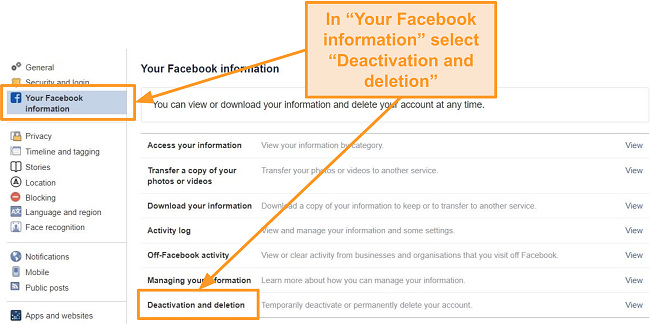
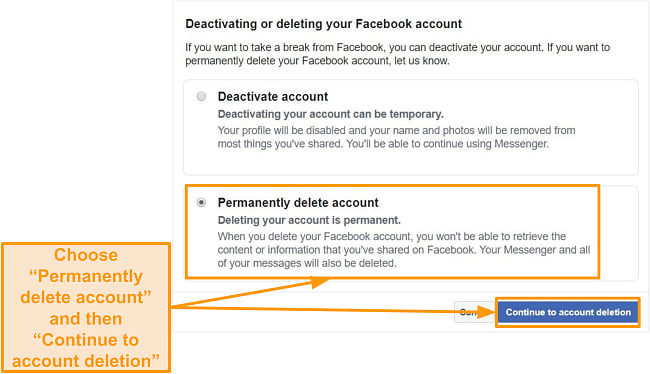

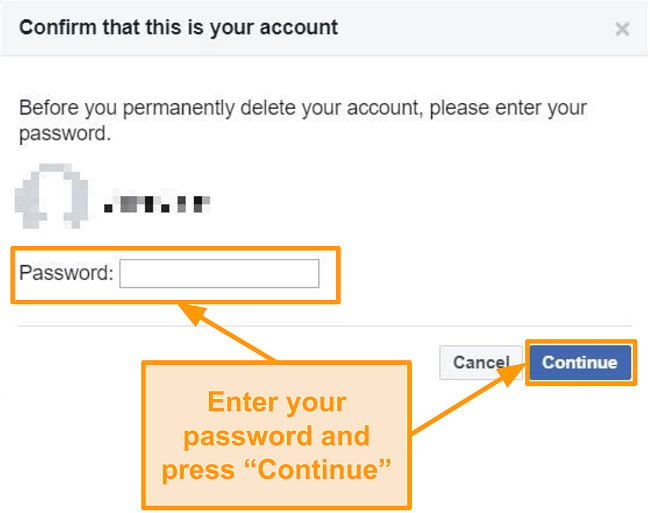
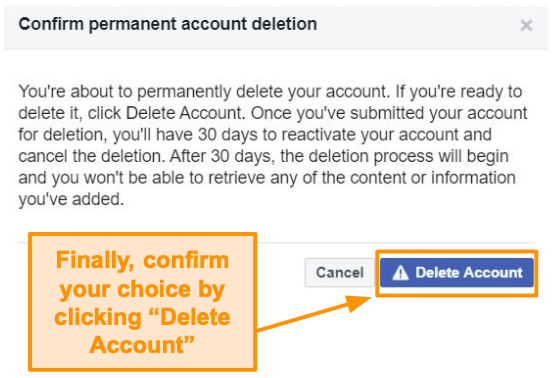
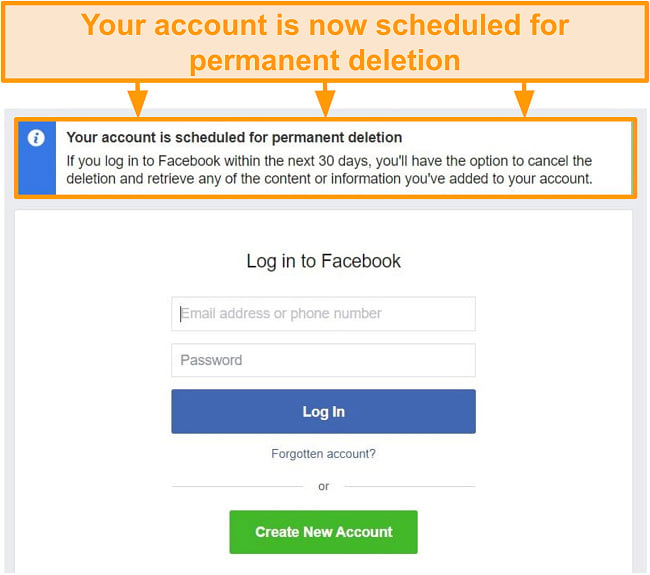
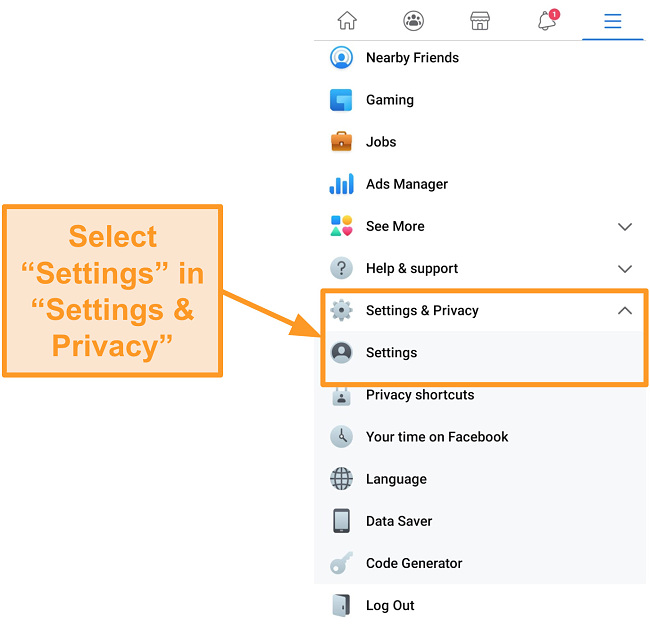
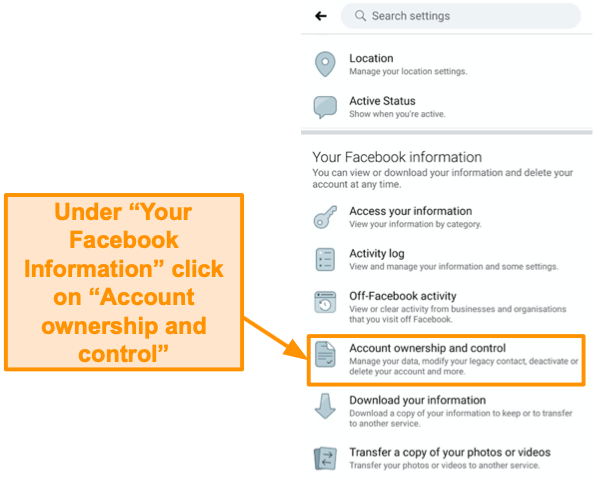
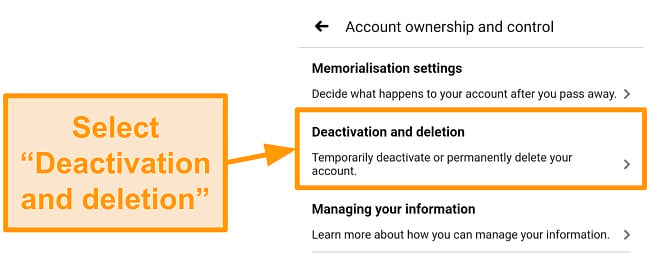
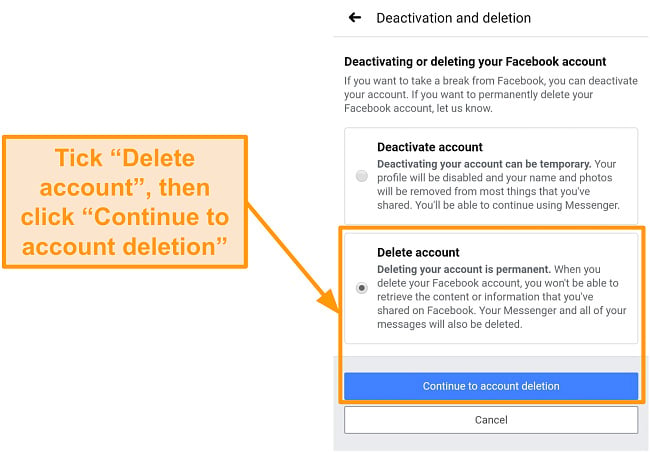
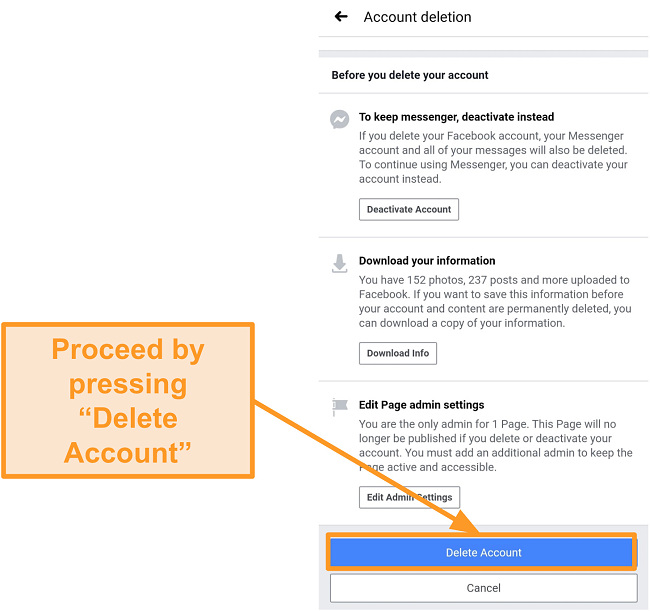
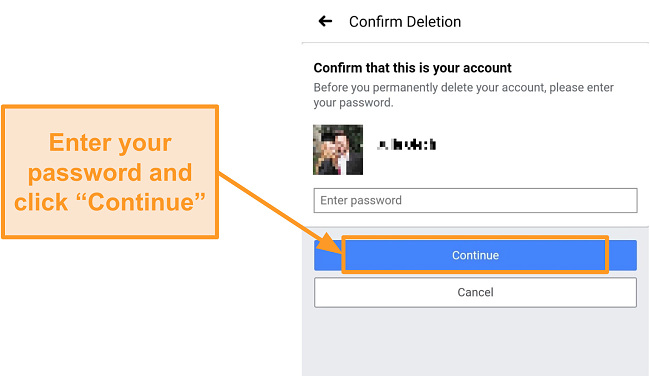
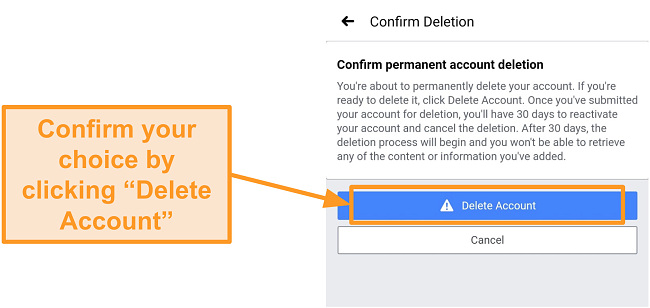
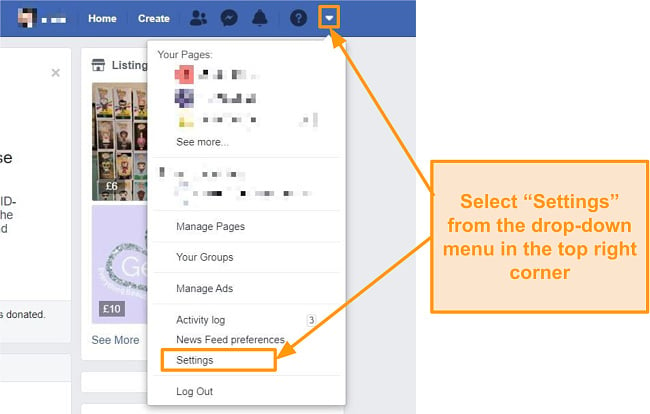
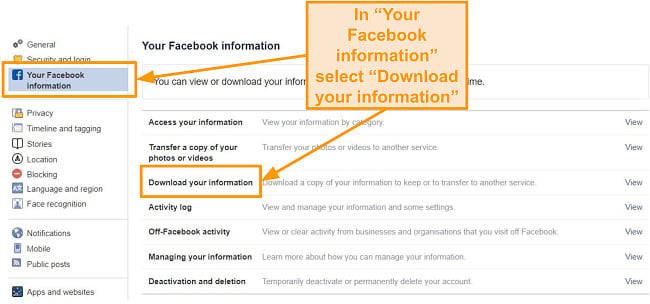
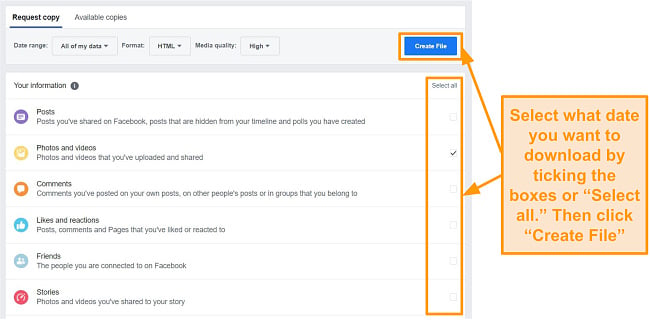
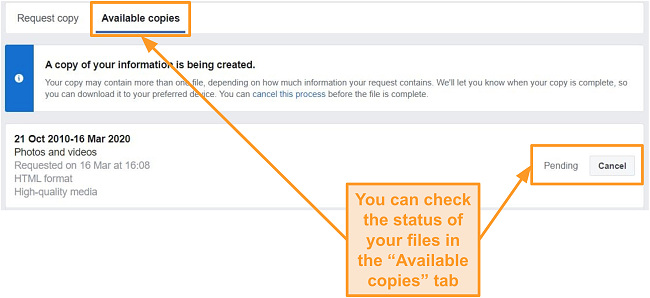
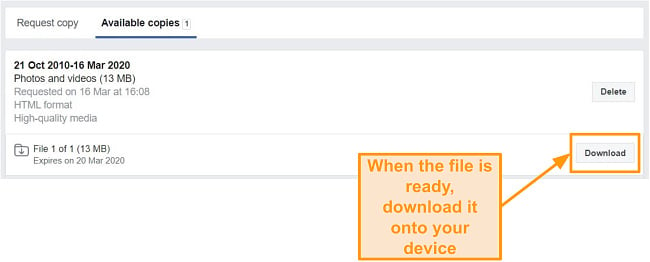
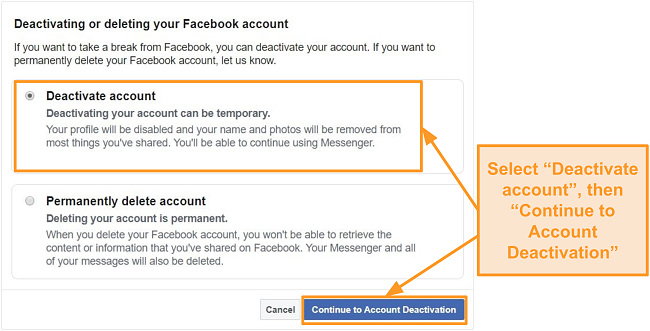
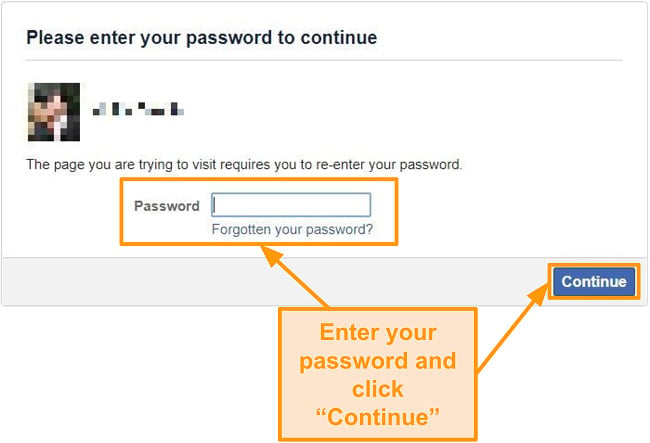
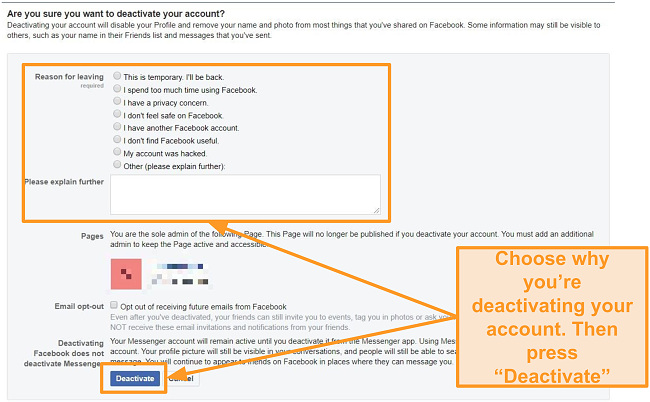
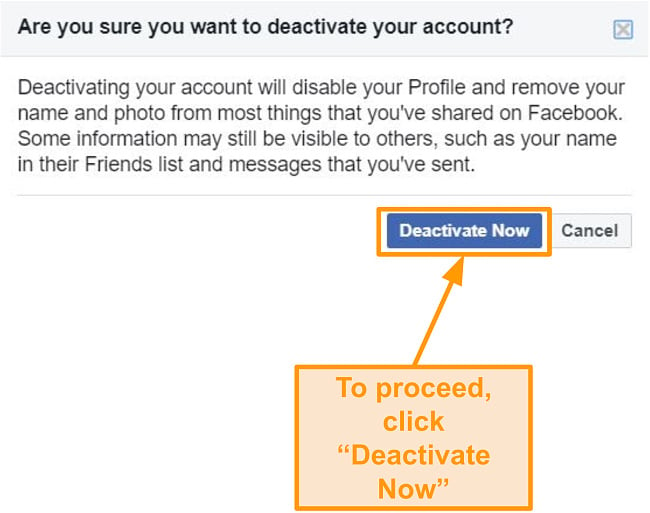
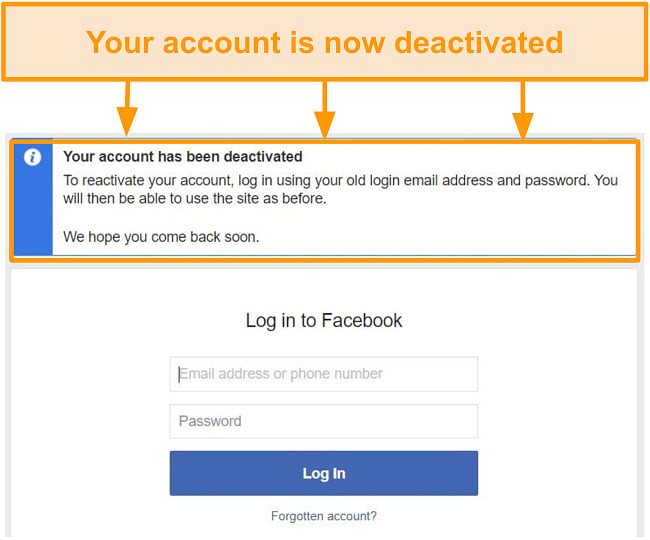
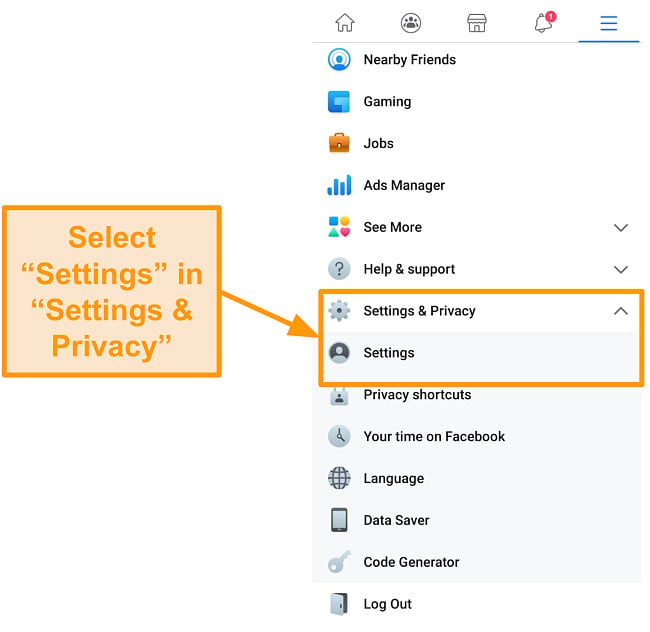
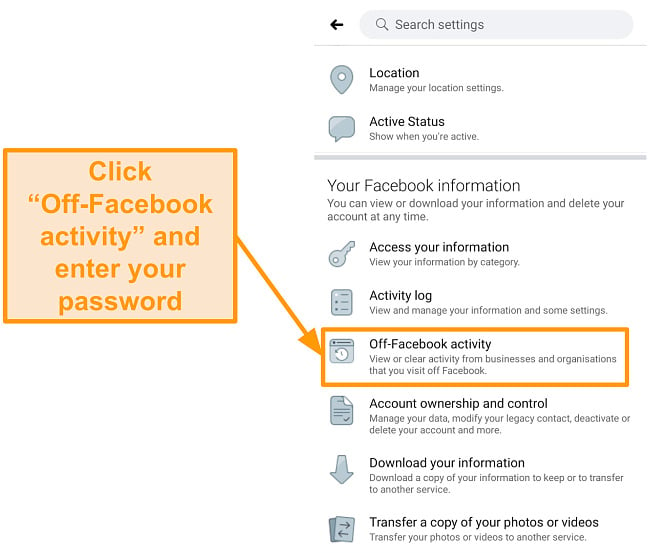
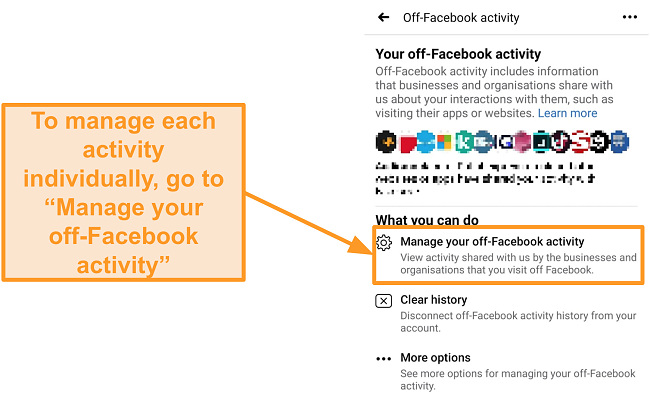
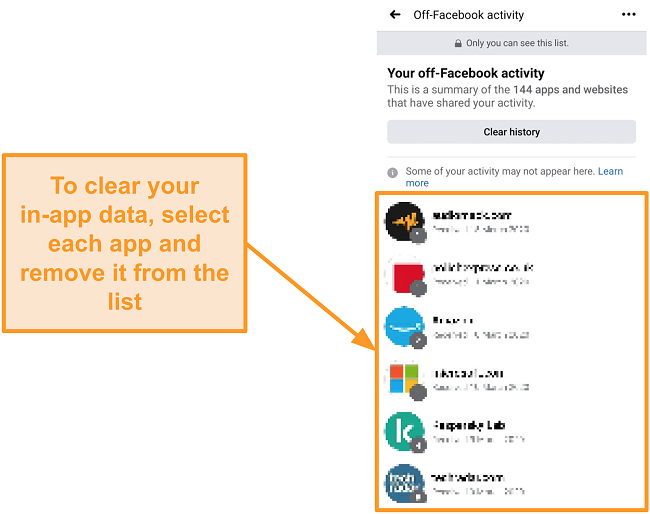
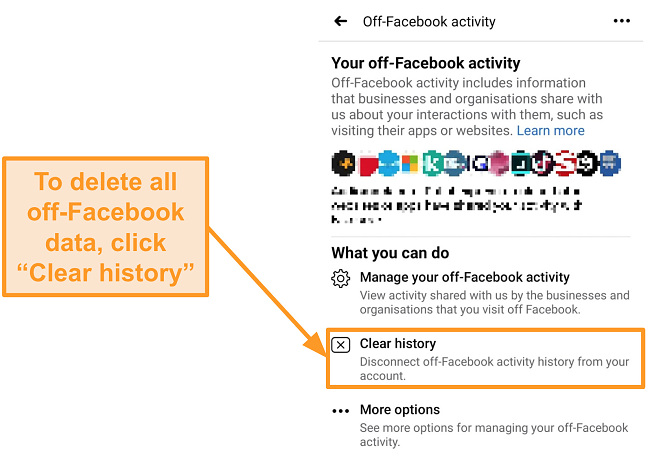
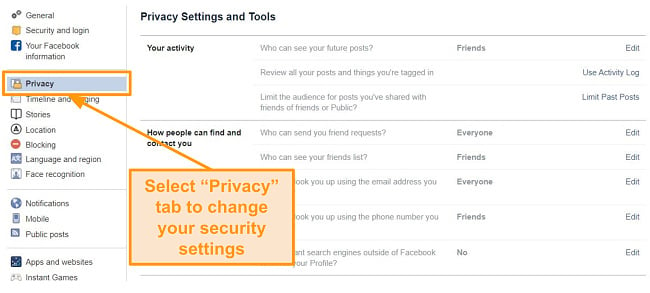
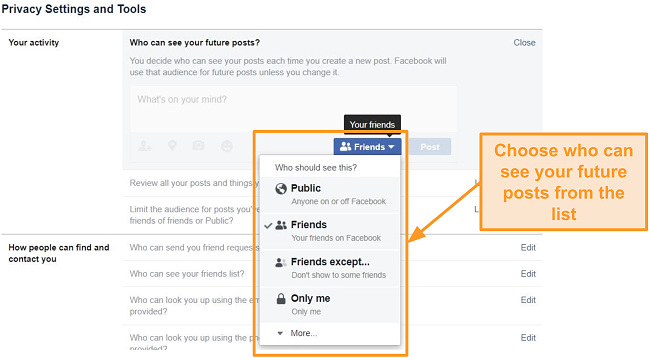
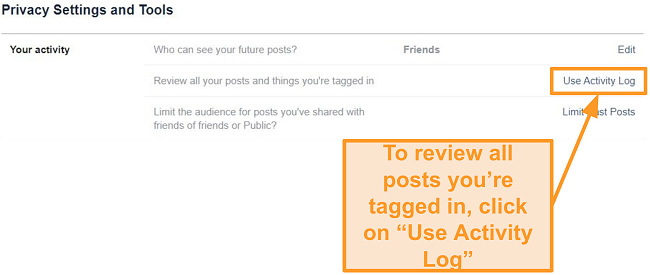
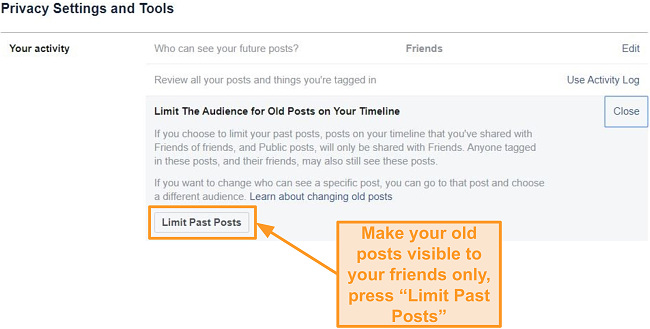
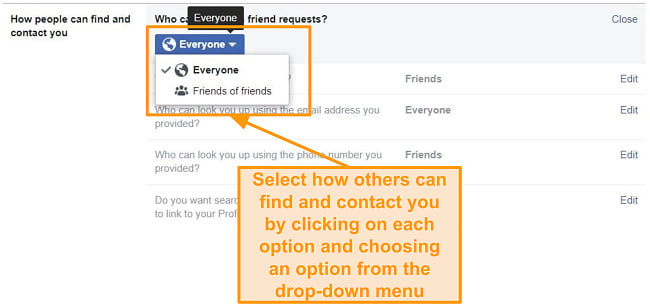


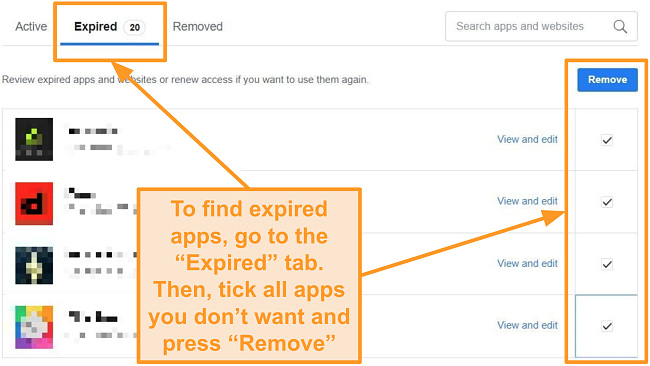
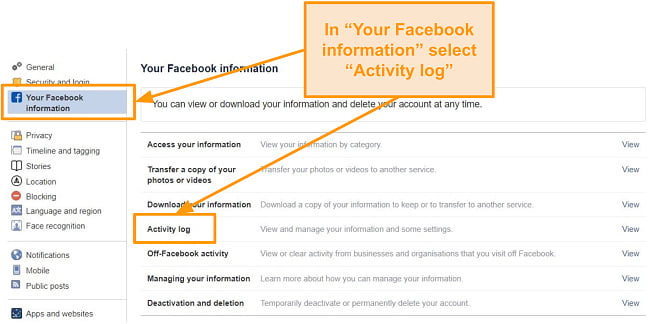
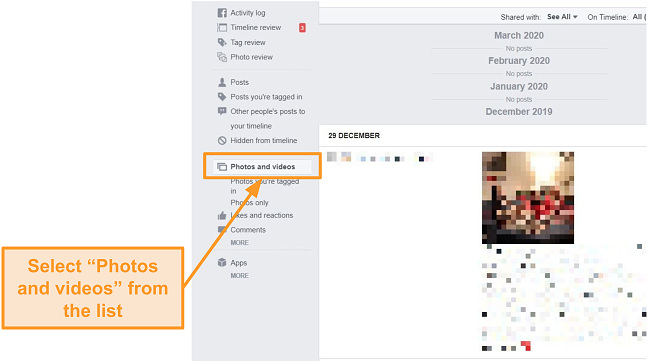

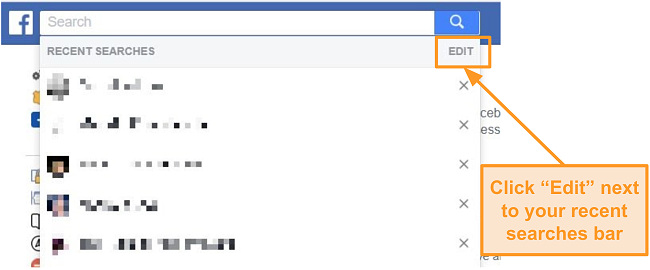

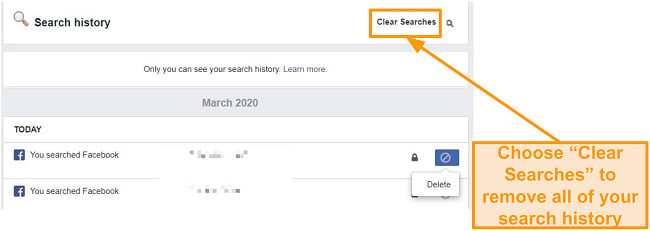
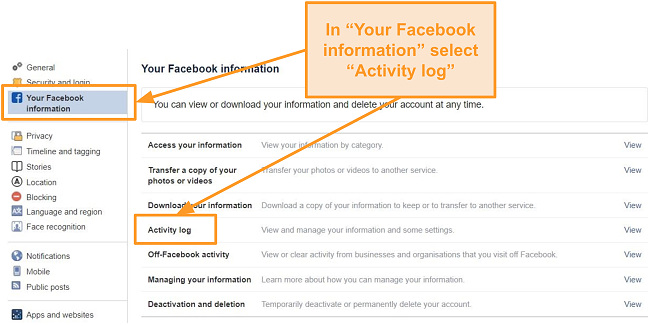

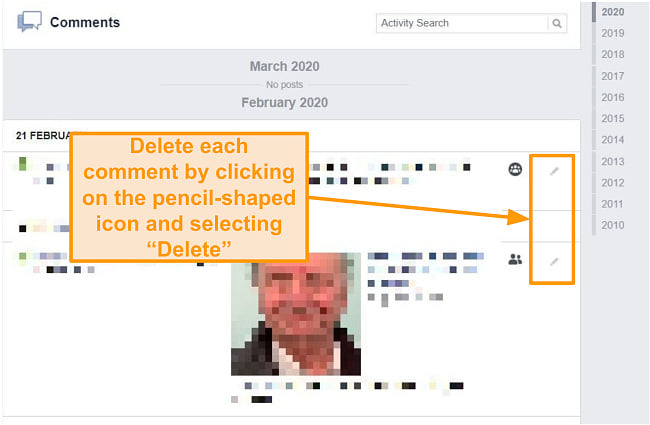
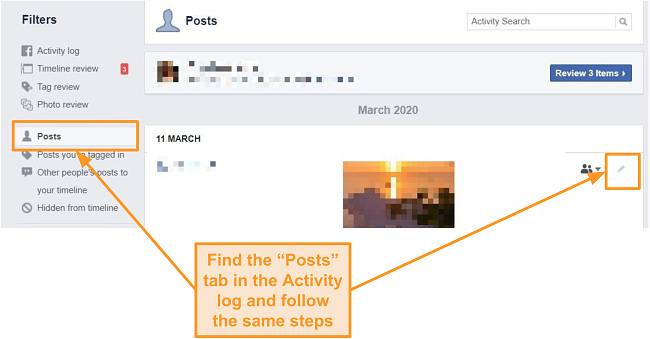
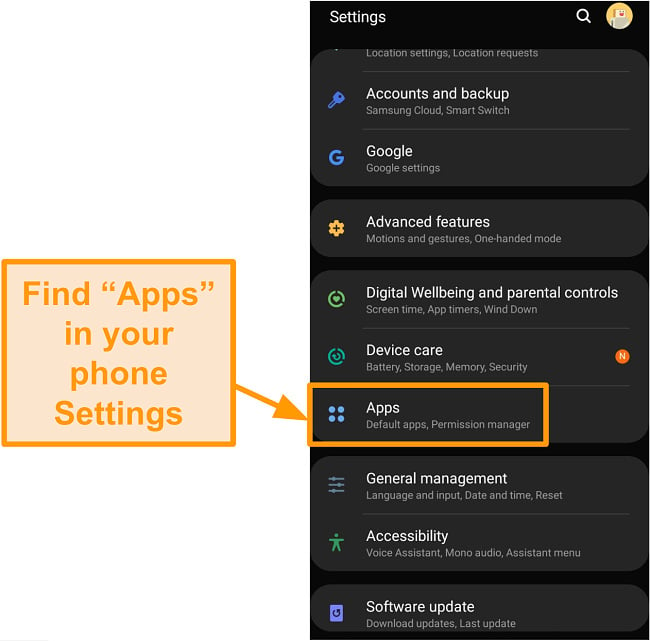
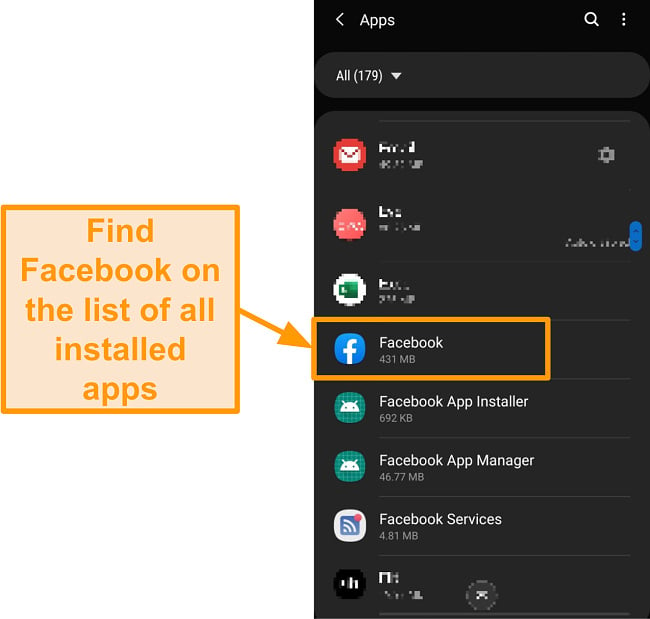
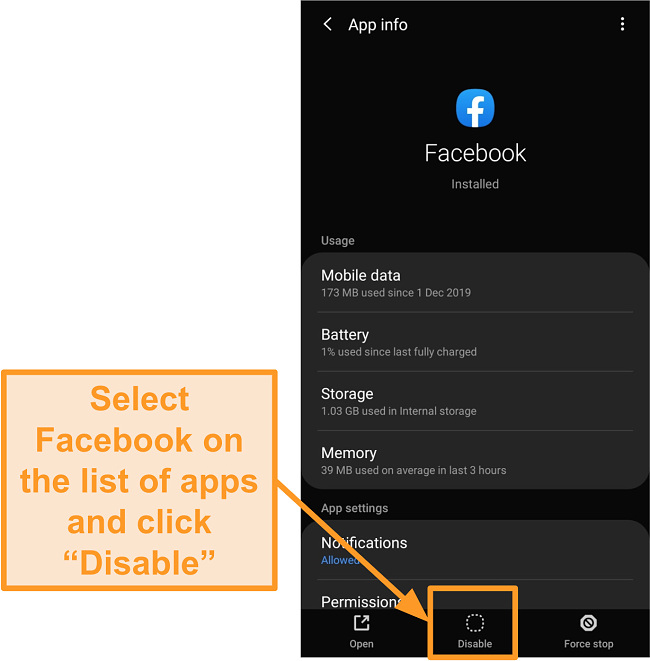
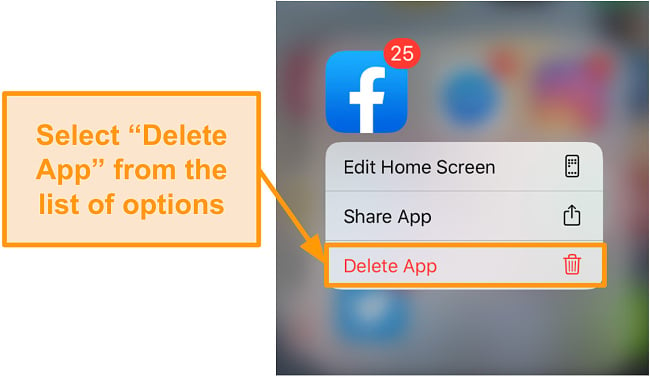
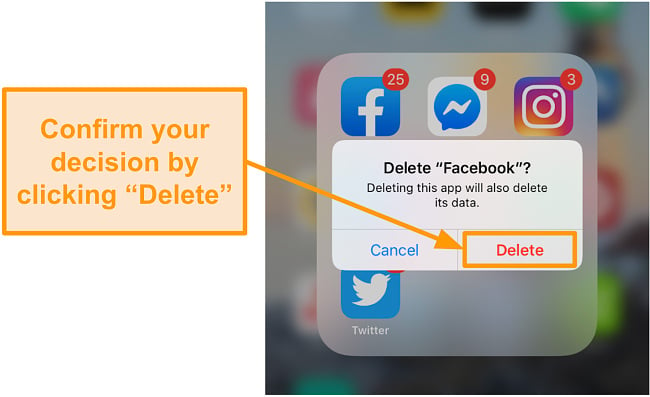
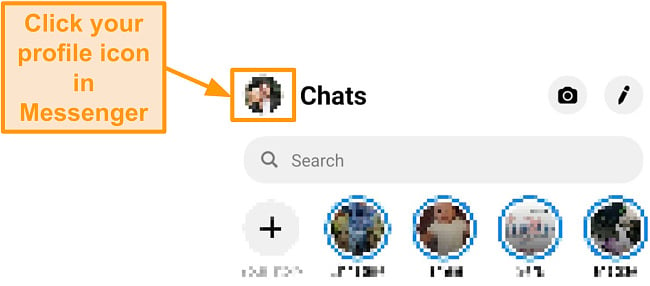
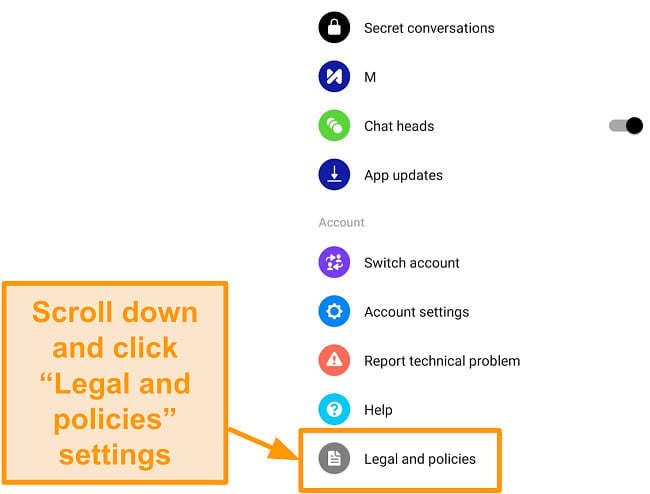
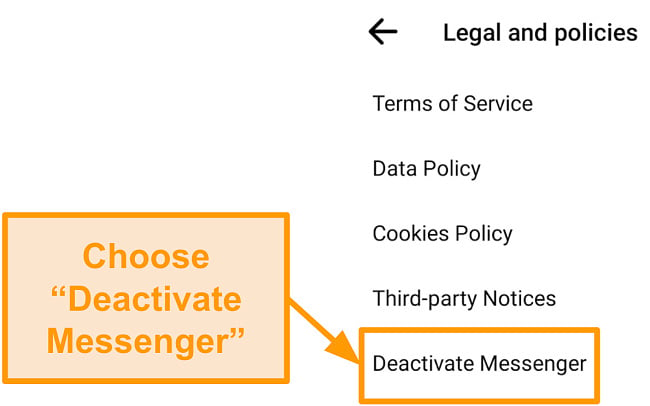
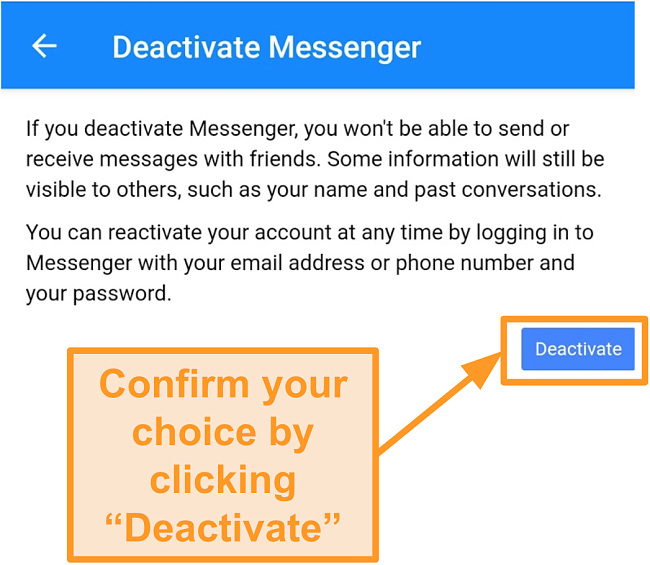
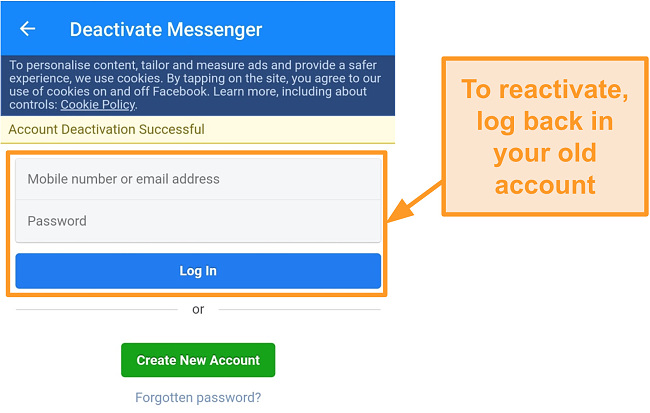




Leave a Comment
Cancel